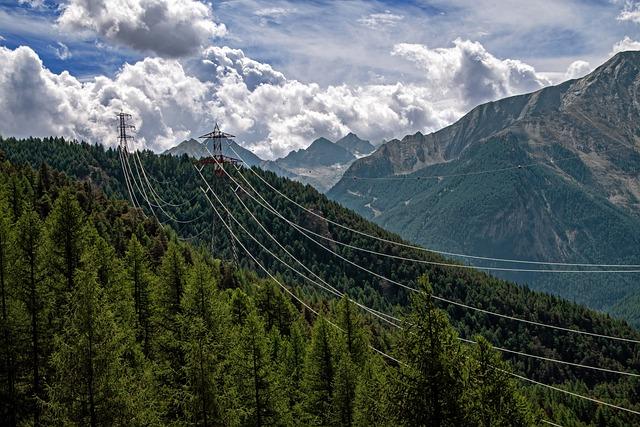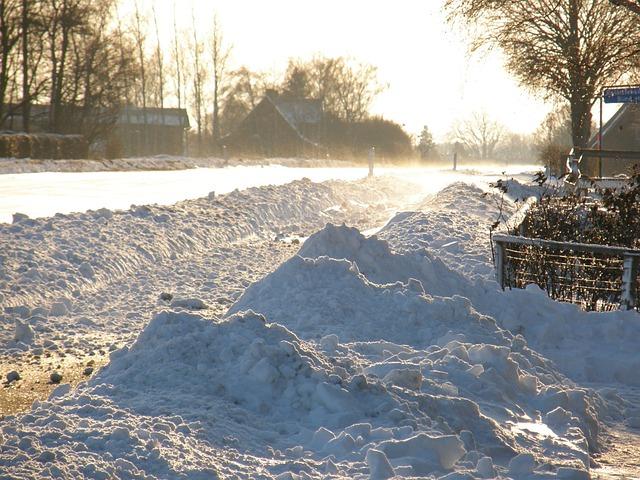Tree pruning is an essential part of keeping your landscaping healthy and thriving throughout the changing seasons. As the weather shifts, so too do the needs of your trees. From shaping young trees to removing dead branches, proper pruning can promote growth and prevent disease. In this article, we will explore a variety of seasonal tips for effective tree pruning that will help you maintain the beauty and health of your landscape year-round.
Table of Contents
- Springtime Pruning: Best Practices and Benefits
- How to Safely Prune Trees During the Summer Months
- The Importance of Fall Tree Pruning for Winter Preparation
- Key Considerations for Pruning Trees in Different Seasons
- Q&A
- Conclusion
Springtime Pruning: Best Practices and Benefits
Pruning trees in the spring is crucial for promoting healthy growth and the overall well-being of your landscape. By following best practices, you can ensure that your trees thrive throughout the season and beyond. One key benefit of springtime pruning is the removal of dead or diseased branches, which can help prevent the spread of disease and improve the overall appearance of your trees.
When pruning your trees in the spring, it’s important to keep in mind a few key tips:
- Wait until after the last frost before pruning to avoid damaging new growth.
- Use sharp, clean tools to make clean cuts and promote faster healing.
- Focus on removing any branches that are crossing or rubbing against each other.
How to Safely Prune Trees During the Summer Months
When it comes to tree care, pruning is an essential task that should be done with caution, especially during the summer months. Proper tree pruning not only helps maintain the health and appearance of your trees but also promotes new growth. To ensure you’re pruning safely and effectively, here are some seasonal tips to keep in mind:
- **Timing is Key**: It’s best to prune trees during the dormant season, but if you need to prune in the summer, aim for early summer when tree growth is at its peak.
- **Use the Right Tools**: Make sure to use sharp, clean pruning tools to make clean cuts and prevent damage to the tree. This includes hand pruners, loppers, and pruning saws.
- **Prune Strategically**: Focus on removing dead, diseased, or damaged branches first, then move on to shaping and thinning out the tree for optimal air circulation and sunlight penetration.
By following these seasonal tips for tree pruning, you can help ensure the health and vitality of your trees while creating a safe and beautiful outdoor space.
The Importance of Fall Tree Pruning for Winter Preparation
During the fall season, it is crucial to prioritize tree pruning as part of your winter preparation routine. Proper pruning not only enhances the appearance of your trees but also promotes overall tree health and safety. Here are some key reasons why fall tree pruning is essential:
- Enhanced Tree Structure: Pruning in the fall helps improve the overall structure of trees, allowing them to withstand harsh winter weather conditions such as heavy snow and strong winds.
- Pest and Disease Prevention: Removing dead, damaged, or diseased branches during the fall can help prevent the spread of pests and diseases, which are more prevalent in winter when trees are most vulnerable.
- Promotes Growth: By trimming branches in the fall, trees can allocate more energy towards root growth, ensuring stronger and healthier growth come springtime.
| Tip: | Use clean and sharp pruning tools to make precise cuts and minimize damage to the tree. |
Key Considerations for Pruning Trees in Different Seasons
When it comes to pruning your trees, the season can play a crucial role in ensuring the health and growth of your plants. Understanding the can help you make the right choices for your landscaping. Here are some seasonal tips to keep in mind:
- Spring: This season is ideal for pruning most trees, as it allows for new growth to emerge easily. Focus on removing dead or damaged branches, as well as shaping the tree for future growth.
- Summer: While minimal pruning is recommended during the summer months, you can still remove any dead or diseased branches to prevent the spread of disease. Avoid heavy pruning, as it can stress the tree during the warmer months.
- Fall: Fall is a great time to prune certain trees, especially those that are prone to diseases. Remove any diseased or insect-infested branches before winter sets in to protect the overall health of the tree.
- Winter: Pruning in winter should be kept to a minimum, focusing mainly on removing branches that pose a safety hazard. Avoid heavy pruning during this season, as it can slow down growth and leave the tree vulnerable to cold temperatures.
Q&A
Q: Why is pruning important for trees during different seasons?
A: Pruning helps trees maintain their health, shape, and structural integrity. Different seasons require different pruning techniques to maximize effectiveness and encourage healthy growth.
Q: When is the best time to prune trees in the spring?
A: It is best to prune trees in the late winter or early spring before new growth begins. This allows the tree to focus its energy on producing new growth and healing wounds.
Q: Are there any specific techniques to follow when pruning trees in the summer?
A: In the summer, it is important to focus on removing dead or damaged branches to promote air circulation and prevent disease. Avoid pruning during periods of extreme heat to minimize stress on the tree.
Q: How should trees be pruned in the fall to prepare for winter?
A: In the fall, focus on removing any dead or diseased branches to prevent potential damage from falling debris during winter storms. Avoid heavy pruning that could stimulate new growth before dormancy.
Q: Are there any general tips for tree pruning throughout the year?
A: Always use sharp, clean tools to make precise cuts and minimize damage to the tree. Remember to consider the tree species, its growth habits, and overall health before deciding on a pruning strategy. Keep safety in mind and consider hiring a professional arborist for larger or more complex pruning tasks.
Conclusion
In conclusion, following these seasonal tips for tree pruning will help maintain the health and appearance of your trees throughout the year. By understanding the optimal times to prune, utilizing proper techniques, and considering the specific needs of each type of tree, you can ensure successful and effective pruning that promotes growth and longevity. Remember to always prioritize safety and consult with a professional arborist for guidance on more complex pruning tasks. With these guidelines in mind, you can enjoy beautiful and flourishing trees in your landscape for years to come.
Simpsons Tree Services, Servicing Melbourne’s North Eastern Suburbs
Book a quote online at www.simpsonstrees.com.au




